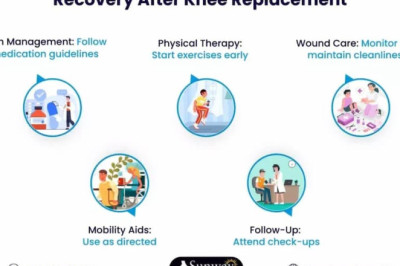views
Liver transplants have become a life-saving solution for patients battling end-stage liver disease, cirrhosis, liver cancer, and other chronic hepatic conditions. Over the years, India has emerged as a global hub for liver transplants, offering advanced medical facilities, expert surgeons, and high liver transplant success rates at a fraction of international costs. But how successful are liver transplants in India really? Let’s break it down.
Understanding Liver Transplant
A liver transplant involves surgically removing a damaged or diseased liver and replacing it with a healthy liver from a donor. This could be a deceased donor (cadaveric transplant) or a living donor, where a portion of the liver is transplanted. Since the liver has the unique ability to regenerate, even partial liver transplants can result in full recovery for both the donor and recipient.
What Determines Success?
The success rate of a liver transplant depends on several factors:
- The experience of the surgical team
- The type and stage of liver disease
- The patient’s age and overall health
- Post-transplant care and follow-up
- The hospital's infrastructure and transplant protocols
In India, improvements in each of these areas have led to significantly better outcomes in the last decade.
Liver Transplant Success Rate in India
Currently, the average liver transplant success rate in India ranges between 85% and 95%, depending on the center and complexity of the case. This means that the vast majority of patients who undergo the procedure survive beyond one year post-transplant and go on to live healthy lives.
- One-Year Survival Rate: Approximately 90%
- Five-Year Survival Rate: Around 70–75%
- Ten-Year Survival Rate: About 60–65%, especially with consistent follow-up
These numbers are comparable with global benchmarks in countries like the USA and UK.
Why Is India Emerging as a Liver Transplant Leader?
India is becoming a preferred destination for liver transplants, and here’s why:
- Expertise of Surgeons: Specialists like Dr. Aswin Krishna, known for their skill in hepatobiliary and transplant surgery, have made groundbreaking contributions in managing complex liver diseases.
- Advanced Infrastructure: Top-tier hospitals across cities like Chennai, Delhi, and Hyderabad are equipped with state-of-the-art ICUs and liver care units.
- Affordability: The cost of a liver transplant in India is significantly lower than in Western countries, without compromising on quality.
- Living Donor Programs: India has one of the largest and most efficient living donor liver transplant programs in the world.
Key Factors That Improve Success Rates
Several strategies contribute to improved outcomes:
- Early Diagnosis: Catching liver disease early gives a better chance for transplant success.
- Stringent Evaluation: Pre-surgical evaluations help determine if the patient is fit for surgery and likely to benefit from the transplant.
- Immunosuppressive Medications: These prevent the body from rejecting the new liver.
- Post-Transplant Monitoring: Regular checkups, blood tests, and imaging ensure the liver is functioning well and complications are addressed early.
Recovery After a Liver Transplant
Most patients begin to feel better within a few weeks. However, full recovery can take several months. With proper diet, medication, and follow-up, many lead completely normal lives—working, traveling, and enjoying time with family.
What Patients Can Do
- Follow medication schedules diligently
- Avoid alcohol completely
- Maintain hygiene to reduce the risk of infections
- Attend regular follow-ups with the transplant team
- Stay mentally positive, as recovery is both physical and emotional
Challenges That Still Exist
Despite the progress, some hurdles remain:
- Limited organ donation from deceased donors
- High costs for uninsured patients
- Awareness gaps in rural areas
- Risk of post-operative complications such as infections or rejection
However, ongoing awareness campaigns, improved insurance coverage, and public-private collaboration are helping bridge these gaps.
Final Thoughts
The liver transplant success rate in India is a testament to the country’s progress in advanced healthcare. With expert doctors like Dr. Aswin Krishna, cutting-edge hospitals, and growing awareness, patients from across India and abroad are getting a new lease on life. While challenges remain, the outcomes are more hopeful than ever.
If you or a loved one is considering a liver transplant, know that India offers not just affordability, but also world-class care and some of the best success rates globally. The key lies in timely diagnosis, expert consultation, and strong post-surgery support.
For more details : https://draswinkrishna.com/liver-transplant-in-chennai/





















Comments
0 comment